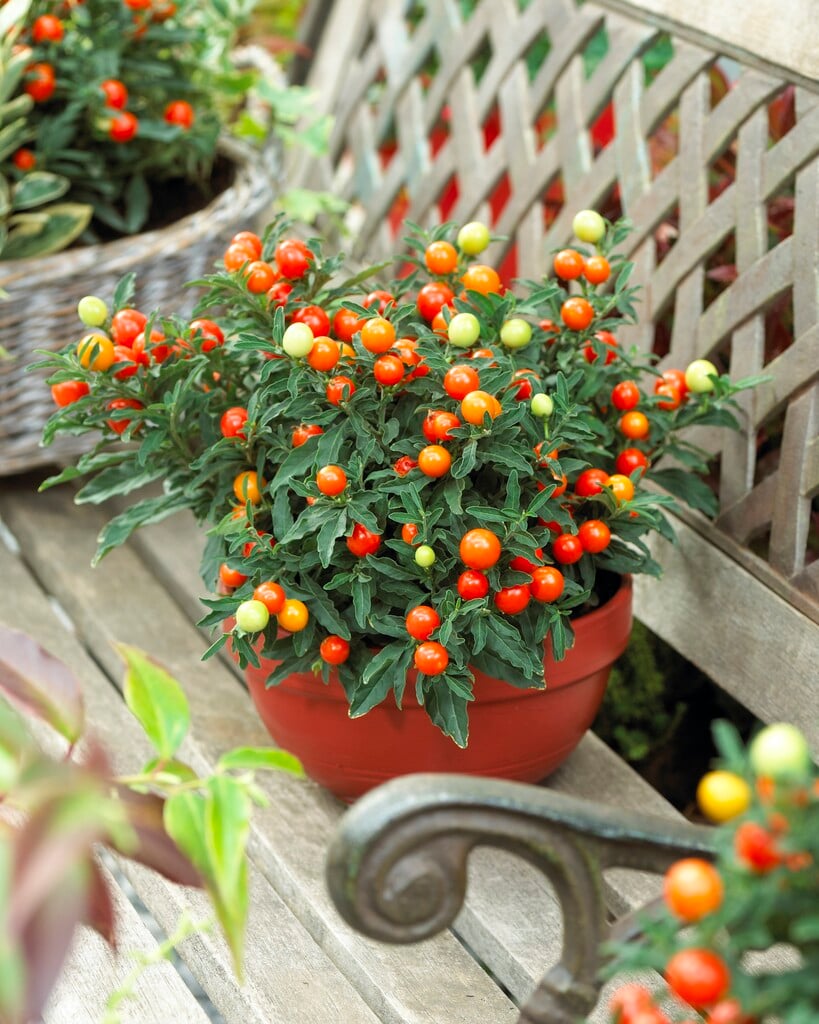Solanum pseudocapsicum
Christmas cherry
A small, upright, bushy, evergreen shrub to 30cm, usually grown as a winter-fruiting annual. Leaves are narrow, dark green and glossy, with wavy-edges. In summer, it produces small clusters of white, star-shaped flowers, followed by long-lasting, spherical, red, yellow or orange fruit 1.5 to 2cm across
Synonyms
Solanum capsicastrum
Buy this plant
Size
Ultimate height
0.1–0.5 metresTime to ultimate height
1 yearUltimate spread
0.1–0.5 metresGrowing conditions
Moisture
Moist but well–drainedpH
NeutralColour & scent
| Stem | Flower | Foliage | Fruit | |
| Spring | Green | |||
|---|---|---|---|---|
| Summer | White | Green | ||
| Autumn | Green | Red Yellow Orange | ||
| Winter | Green | Red Yellow Orange |
Position
- Full sun
- Partial shade
Aspect
East–facing or South–facing or West–facing
Exposure
Sheltered Hardiness
H2Botanical details
- Family
- Solanaceae
- Native to GB / Ireland
- No
- Foliage
- Evergreen
- Habit
- Bushy
- Potentially harmful
- Harmful if eaten. Wear gloves and other protective equipment when handling Pets (dogs): Harmful if eaten - for further information and contact numbers regarding pets, see the HTA guide to potentially harmful plants
- Genus
Solanum can be annuals, perennials, evergreen or deciduous shrubs or twining climbers, with simple or pinnnately lobed leaves and star- or bowl-shaped, 5-lobed flowers with prominent stamens, followed by fleshy fruits
- Name status
Correct
How to grow
Cultivation
Grow in peat-free, loam-based potting compost in bright light
Propagation
Propagate by seed or semi-ripe cuttings
Suggested planting locations and garden types
- Houseplants
- Patio and container plants
- Conservatory and greenhouse
Pruning
Pruning group 9 if grown long term, otherwise no pruning required
Pests
May be susceptible to aphids and glasshouse red spider mite
Diseases
May be susceptible to honey fungus (rarely) and grey moulds
Get involved
The Royal Horticultural Society is the UK’s leading gardening charity. We aim to enrich everyone’s life through plants, and make the UK a greener and more beautiful place.